We love simple science experiments. And this one is really easy to set-up and the kids are always amazed at the end result. Learn about color mixing and capillary action in this easy walking water experiment!
RELATED: Grow a Rainbow Experiment
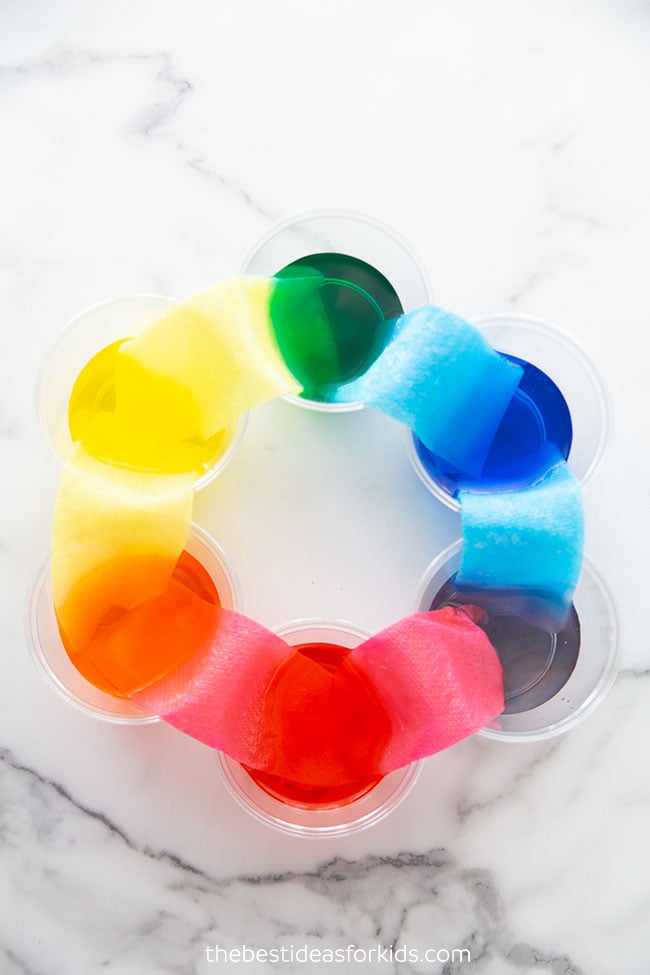
Walking Water Science Experiment
This science project is fun for kids of all ages to try! Kids will be amazed at the rainbow created using capillary action. You can also use this activity to teach about color mixing and rainbows.
See also our Grow a Rainbow experiment.
Watch the Video Tutorial
Here is what you will need for this activity:
- Paper Towel – 6 folded half sheets
- Food Coloring – we like the liquid gel food coloring (you just need 1 drop) but regular food coloring works too
- Water
- 7 Small Clear Cups or Glasses
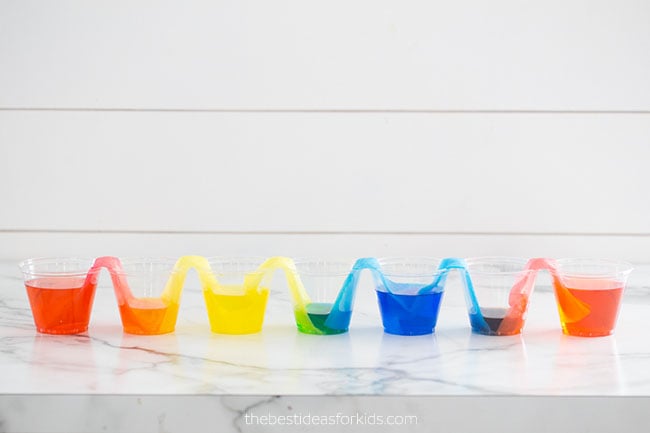
What is the Science Behind This Experiment?
This science experiment is a great example of coloring mixing and capillary action.
Kids can learn about how secondary colors are formed when the orange, green and purple colors are made in the empty cups.
Capillary action is what makes the dye move up the paper towel. The water moves upward through the paper towel, lifting the food dye molecules with it. This same phenomenon is what allows trees to get water from the ground with their roots. Paper towels are made from fibers found in plants, called cellulose.
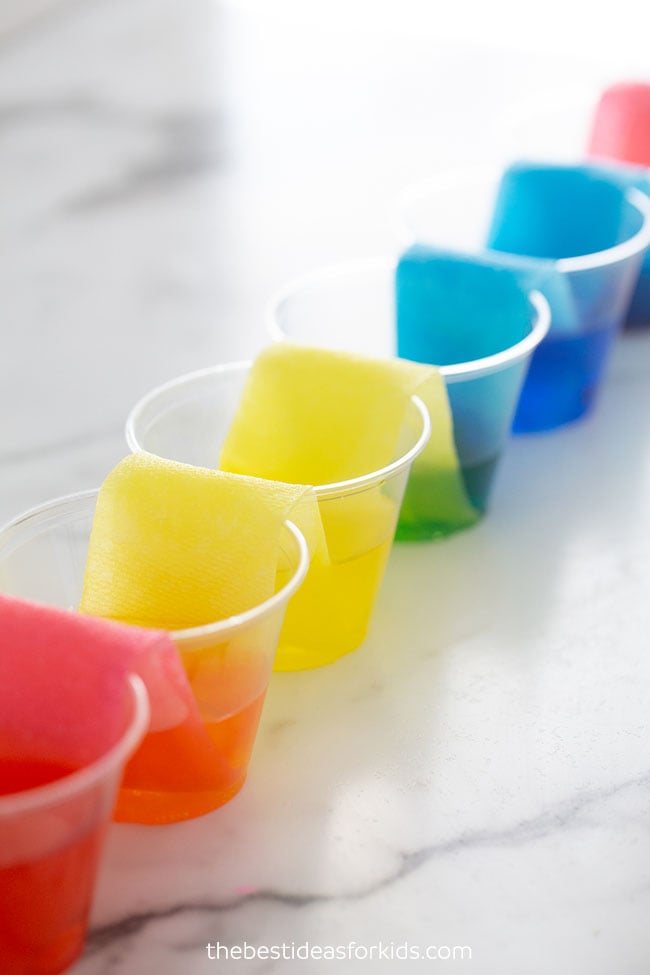
How to do the Walking Water Experiment
1. Start by filling up 4 clear cups with water.
Fill the water to almost the top of the cup.
The more water there is, the faster the walking water will travel.
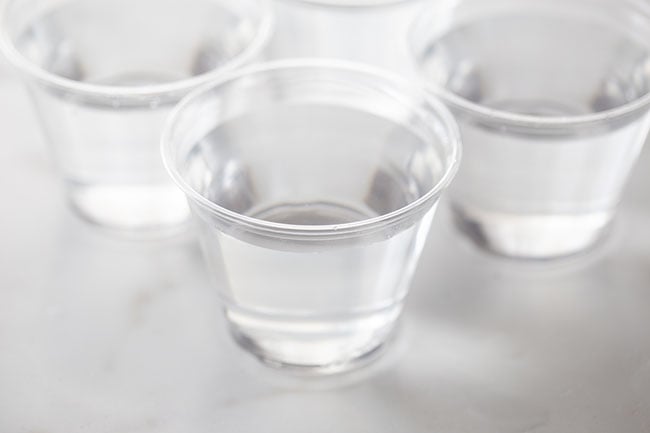
2. Add 1 drop of red food coloring to two of the cups, 1 drop of blue food coloring to one of the cups and 1 drop of yellow to one of the cups.
If using regular food coloring you may need to add a few drops.
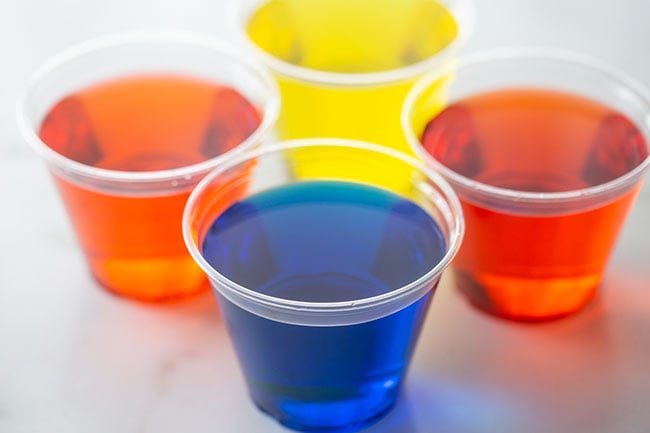
For the red and blue, make sure this is not too concentrated.
Once the colors mix, if they are too concentrated then the purple will look more black than purple.
3. Place the cups in a line starting with red on each end.
Line them up like this:
1. Red
2. Empty Cup
3. Yellow Cup
4. Empty Cup
5. Blue Cup
6. Empty Cup
7. Red Cup
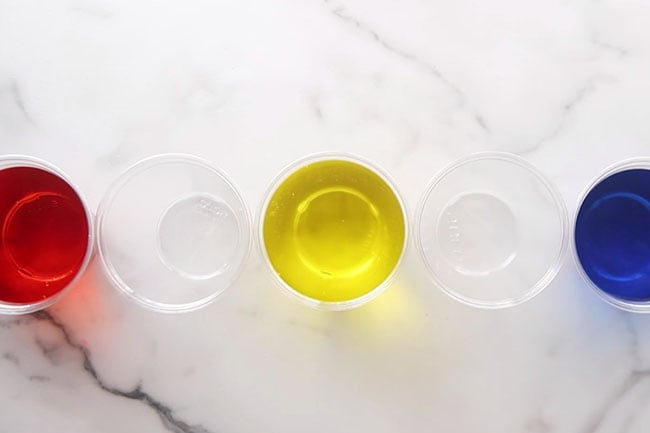
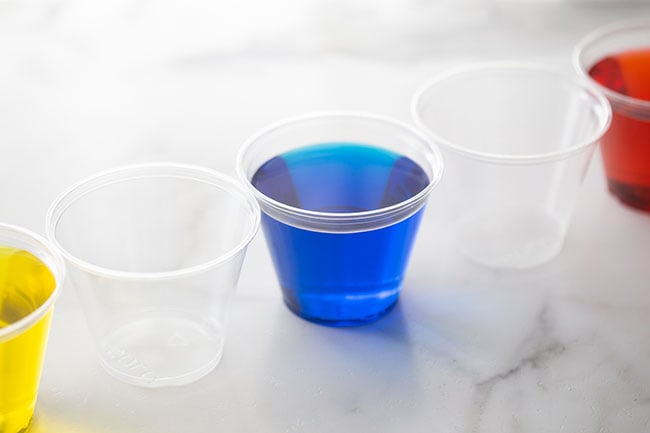
When the colors mix then the order of the rainbow will show this way.
4. Fold over 6 pieces of paper towel (half sheets) and trim about 1/4 off the end so they are not too long.
5. Place a paper towel into each cup and connect with the empty cups.
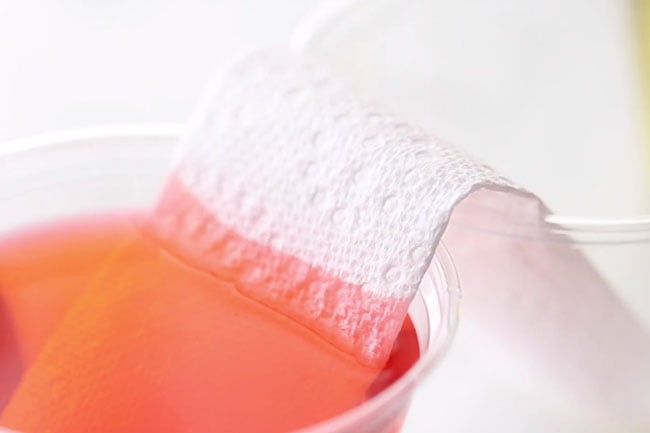
6. The water and dye will immediately start to move up the paper towel into the empty cups.
Blue and red will mix to make purple.
Blue and yellow will mix to make green.
And red and yellow will mix to make orange.
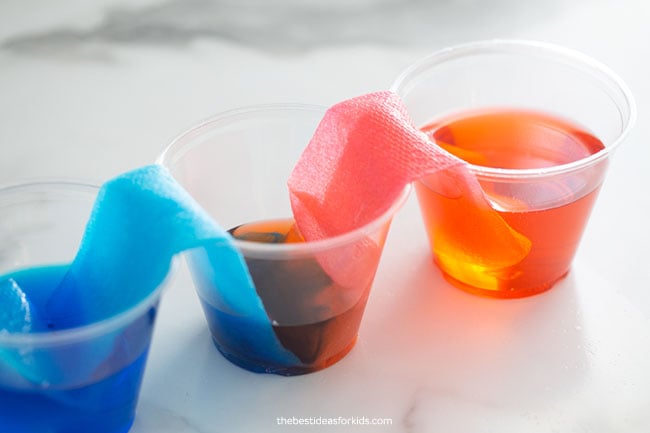
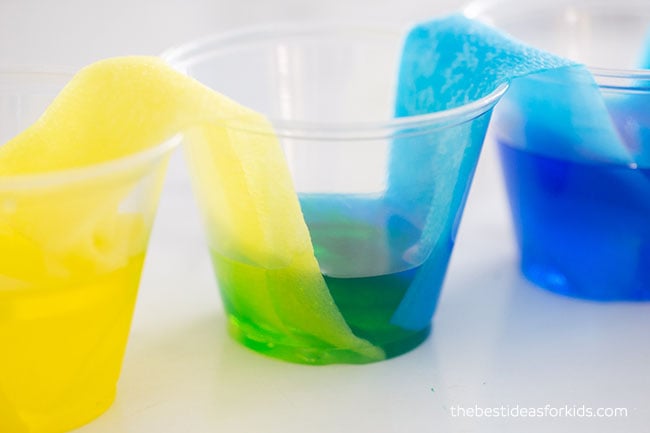
7. Wait 2-3 hours for the empty cups to fill with the new color that is mixed from the other 2 cups.
Now your walking rainbow is complete! You can now see each color from the rainbow in the cups and your empty cups have now been filled with the secondary colors – orange, green and purple!
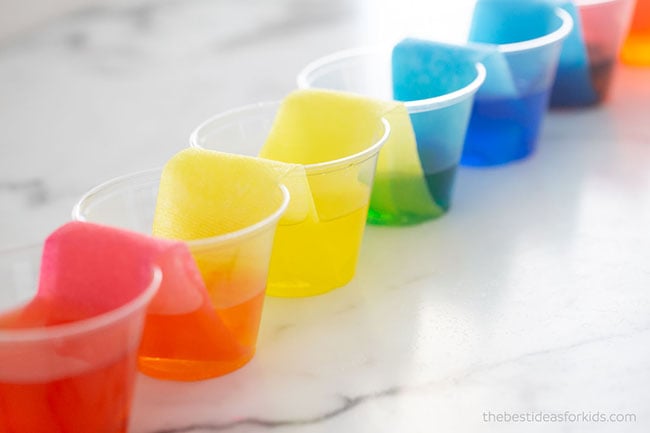
Note – if you would like to do the experiment in a circle instead of a straight line to save space, just make 1 red cup and place the cups in a circle (as shown in the first image).
Kids will love watching the water travel and seeing the new colors being made in this easy science experiment!
More Science Experiments for Kids
Try this fun and easy Grow a Rainbow Experiment. You only need washable markers and paper towel!
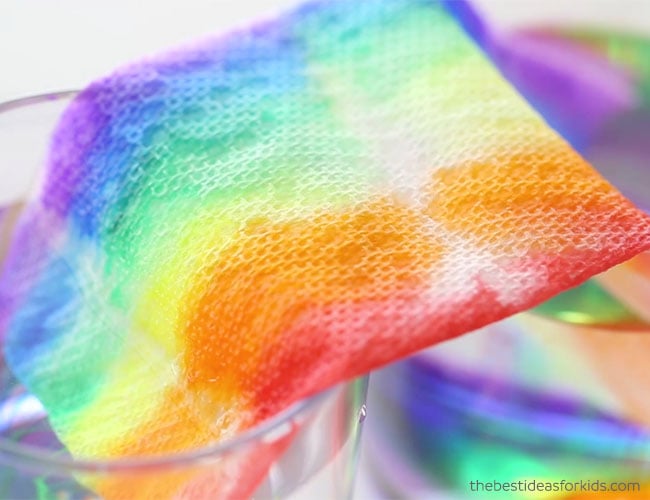
For another fun experiment, make some oobleck!
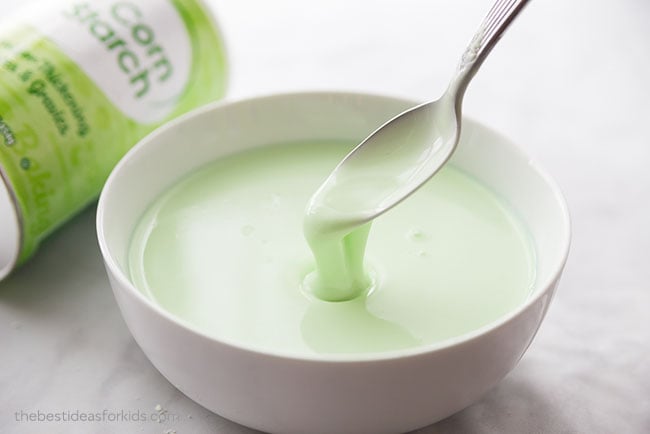
Try a rainbow rain cloud in the jar experiment!
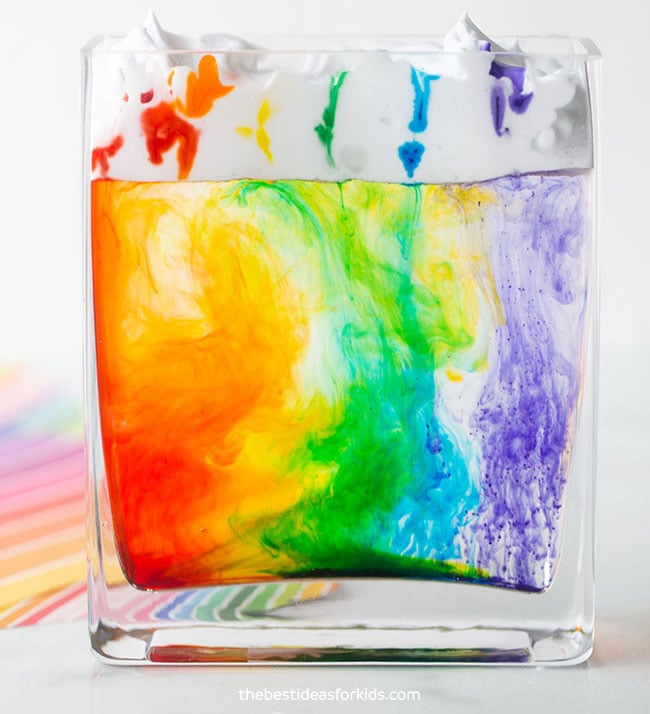


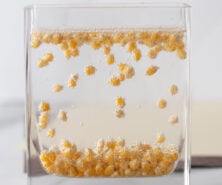
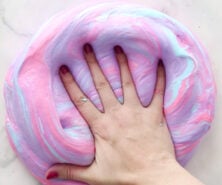
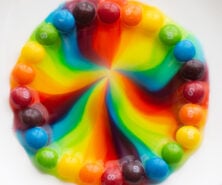
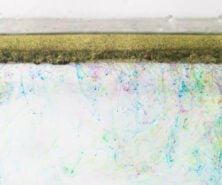
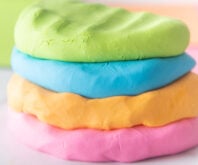
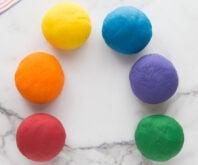
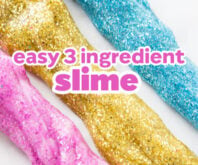


Share a Comment!
We LOVE hearing from you! Submit your question or comment here.
Your email address will not be published.
Required fields are marked *